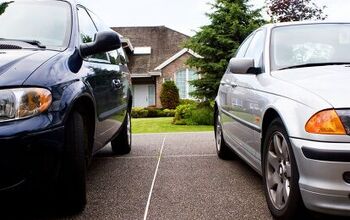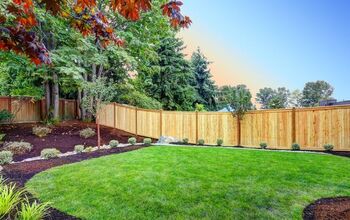Connecting To A Neighbor's Fence? (Here's What You Can Do)

Fences are a great investment. They provide you and your neighbors with privacy and keep pets and children in your yard. They can even add value to your home.
But building a fence, or connecting to a neighbor’s fence without consulting them could cause major issues. Fence disputes can cause even the friendliest neighbors to hold a grudge.
There are ways to connect two fences, but you should always check with your neighbor first. When connecting to a neighbor’s fence, be sure you’re following proper fence etiquette, respecting property lines, and considering local regulations.
Do You Need Fence Installation or Repair Services?
Get free, zero-commitment quotes from pro contractors near you.

What is Proper Fence Etiquette?
One of the most important things to remember when installing a fence is fence etiquette. There are several unspoken rules you should follow to maintain a civil relationship with your neighbors, and follow town rules.
Examples include:
Talk to Your Neighbor
In most areas, you’re not required to have permission from your neighbor to build a fence. But doing so can save you from disputes during construction, and even money, potentially.
If your neighbors don’t already have a fence, you can ask them if they’d like to split the cost. If your neighbor would benefit from a boundary fence as well, they might be agreeable. This will save you both some money on the fence and will benefit both parties.
Give Your Neighbor the “Good Side”
A lot of the traditional styles of fencing have a “good side” and an unfinished, or backside. The good side shows the smoother, finished fence while the backside shows the posts.
It’s common courtesy in fence etiquette to give your neighbor’s the good side of the fence. This is also standard practice, and your fence would look backward if you faced it the other way. There are also “good neighbor” fences you can purchase, which are fences that look the same on both sides.
Follow Local Fence Regulations
Many states, towns, and cities have zoning regulations regarding fences. For example, you might not be able to build a fence that is higher than 10 feet.
Also, state laws don’t contain any laws about fence aesthetics. But your town or city code might dictate the type of fence style you’re able to have. Checking with your local ordinances can save you a lot of time, money, and stress.
Be Mindful of HOA Rules
Another body of rules you may have to follow is that of your Homeowner’s Association if you have one. HOA’s often have strict guidelines on fence style, size, and even color.
When you hire a company to build your fence, they are not responsible for knowing these rules. So, you’ll have to make sure you know the HOA’s rules on fences and communicate those rules to the builders.
Maintain Your Fence
If you’re hoping a fence will add value to your property, you will need to keep it in good condition. Neglecting to maintain your fence can make look shabby, and can shorten its lifespan and durability. Fence maintenance includes cleaning your fence with a cleaner or brightener, re-finishing, and power washing it periodically.
Can I Connect to My Neighbor’s Fence?
Construction-wise, yes, in most cases you can connect your fence panels into the support post on your shared side. But there are a couple of big things to consider before you do this:
How Does Your Neighbor Feel?
Building a fence without asking your neighbor is impolite. But connecting to your neighbor’s fence post without asking is even worse.
From your neighbor’s perspective, they invested a lot of time and money into installing a fence in their yard. If you’re connecting to their fence, you’re directly benefiting from the money they spent to build that side of the fence. Your neighbor might even want you to contribute to some of the costs of that side of the fence.
Do You Know Where the Property Line Is?
Before you think about building a fence, make sure you know where your property line is. A lot of homeowners mistakenly think their property is bigger than it is. They often rely on what their real estate agent told them when they bought the house.
But If you don’t have an official property map, you should clarify this before you build a fence. Without this, you won’t have a leg to stand on if your neighbor claims you’re encroaching on their property.
To find out where your property line is, call a property surveyor. A land survey usually costs around $500 and will tell you exactly where your property line is. Many homeowners who have had one agree that it’s well worth the cost to have proof of their property boundaries.
When Fence Connecting Goes Wrong
Kevin Cooper is a real estate agent from New Hampshire. He has a good example of why some neighbors might be hesitant to let you connect to their fence. When Kevin had new neighbors move into the house behind his, he noticed fence builders on his property. The fence company was attempting to connect to Kevin’s fence, and build part of their fence on his property.
Why? Because the new homeowner mistakenly thought that the fence was the official border between their yards. In reality, Kevin’s fence was built a few feet into the border of his property. The new homeowner was understanding and politely asked if he could tie into Kevin’s fence.
Kevin agreed to let him do this, as long as the new neighbor maintained that part of the fence. The new neighbor agreed, and everything was peaceful. That is until that neighbor sold his house a few years later.
Kevin called his neighbor’s listing agent to make sure his neighbor told them about the fence agreement. The listing agent was unaware, which caused a slew of issues with the title and insurance policy. Having one person’s fence extend onto another’s property can be difficult to mitigate legally, and could turn off prospective buyers.
Luckily, Kevin worked out an agreement permitting the next owners to use his property for the fence. But situations like these are a reminder of why it’s important to have open communication with neighbors about fence building. It also proves why it’s essential to know where your property line is.
Should I Let My Neighbor Connect to My Fence?
Stories like the one above might make people hesitant to let their neighbors connect to their fence. But realistically, most of the time it isn’t an issue. Here are some common concerns from homeowners when their neighbors want to connect to their fence:
Can They Claim My Property as Theirs?
When homeowners have a fence a few inches or feet inside their property line, this is a big concern. Many worry that their neighbor will sell the house down the road, and include their square footage on the listing. But even if this does happen, it’s very easily resolved.
As long as you have proof of where your property line is, no one can claim your property as theirs. If you don’t have an official property map, now is a good time to get a survey done.
They’re taking away my land!
If your border extends out past your fence, you might be concerned about losing part of your land. If you let your neighbor connect to your fence, you will lose that space outside of your fence.
But if it’s only a few inches or feet, try not to stress about it. Since you already had a fence built inside of the property line, did you ever use that space anyway? Letting your neighbor connect to your fence is a worthy sacrifice to maximize your privacy, and build neighborly trust. If you’re concerned about the loss of some of your land, ask them to reimburse you to make up for it.
I Don’t Want Them Damaging My Fence
This is a valid concern when neighbors share a fence. Just make sure that you communicate your concerns with your neighbor. If your fences are connected, consider having an agreement in place to protect both you and your neighbor.
A written agreement can state that you own the fence, but you are letting your neighbor connect to the fence. You can include that any damage to the neighbor’s side of the fence needs to be repaired by the neighbor. You can also specify maintenance you’d like them to complete to their side of the fence, like refinishing as needed.
Do You Need Fence Installation or Repair Services?
Get free, zero-commitment quotes from pro contractors near you.

Related Questions
Can I join two different styles of fence together?
If your neighbor has a different style of fence than the one you’re installing, you can still make it work. Many professional fence companies are skilled at joining fences together, even when connecting different materials. There are ways to do that tastefully that will compliment the landscape.
How much will it cost to build a fence?
Fences can get costly, especially with labor costs. But many homeowners will agree it’s worth the cost – fences are a lot of work, and take a long time to build. The cost depends on the length, height, and type of material. Wood fences cost anywhere from $17-$45 per linear foot.
Related Guides

Kathryn is a craft aficionado who loves writing about DIY home improvement projects. When she's not writing, she loves reading, listening to musicals, and playing with her kids.
More by Kathryn Flegal



























